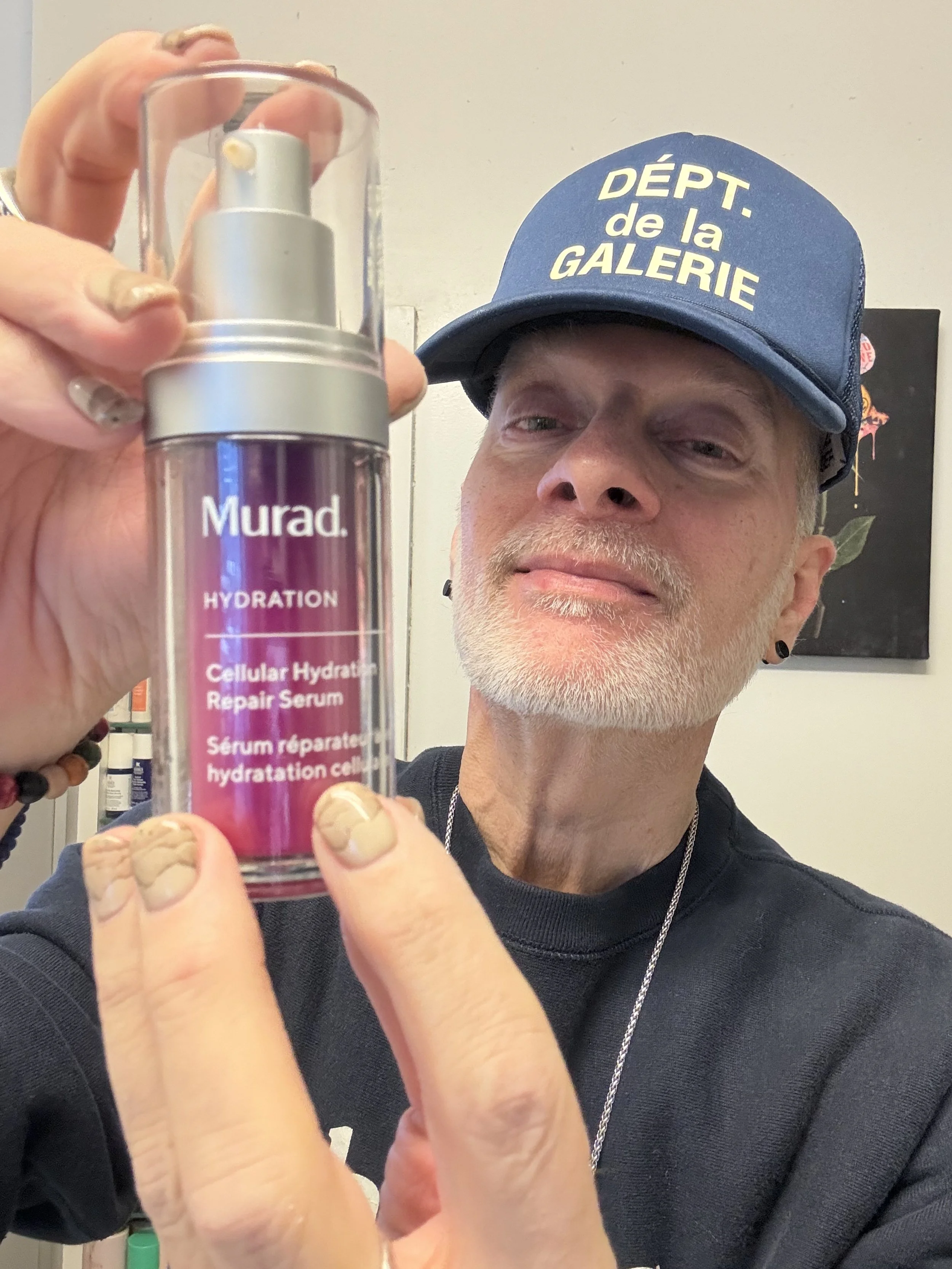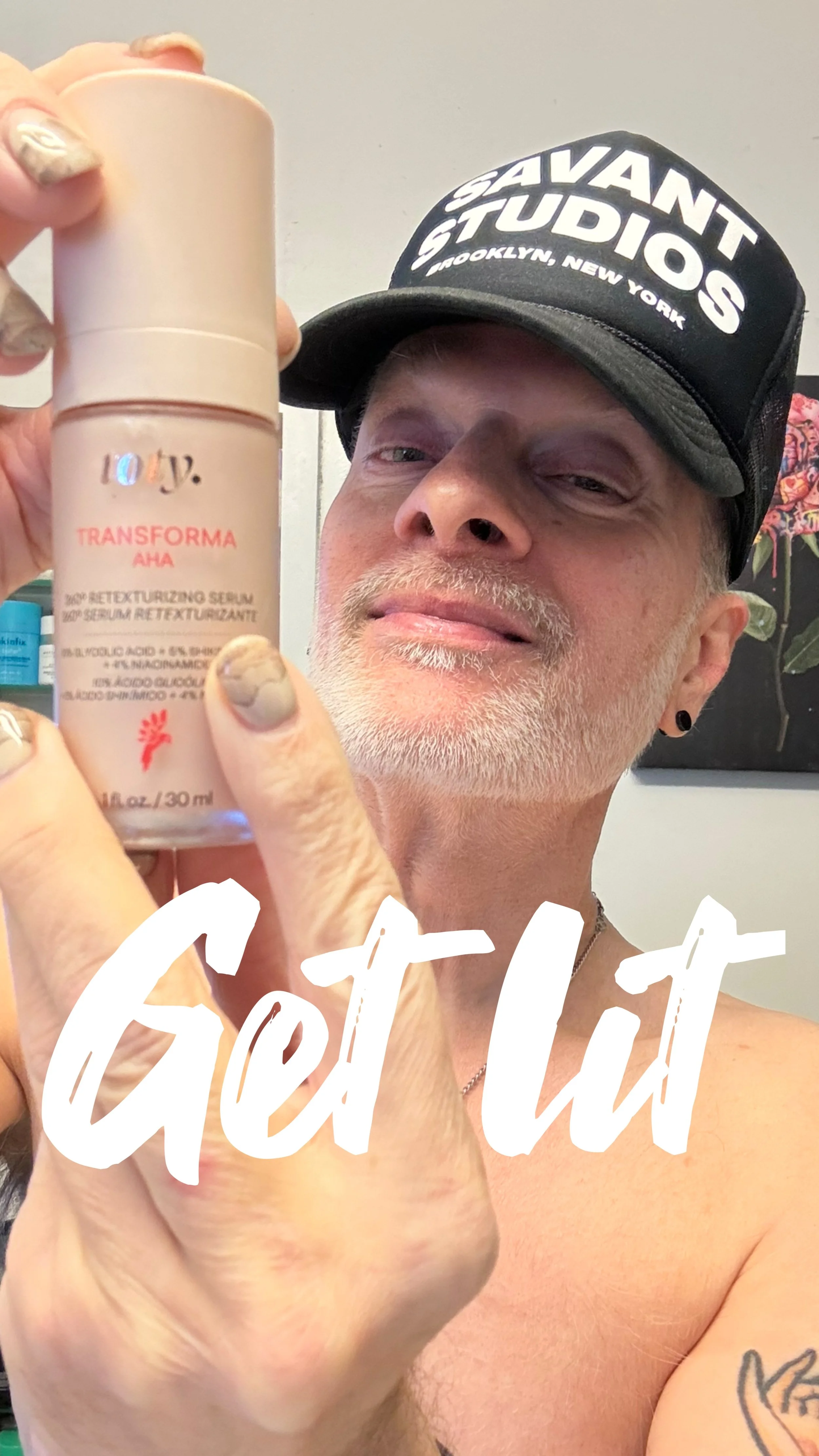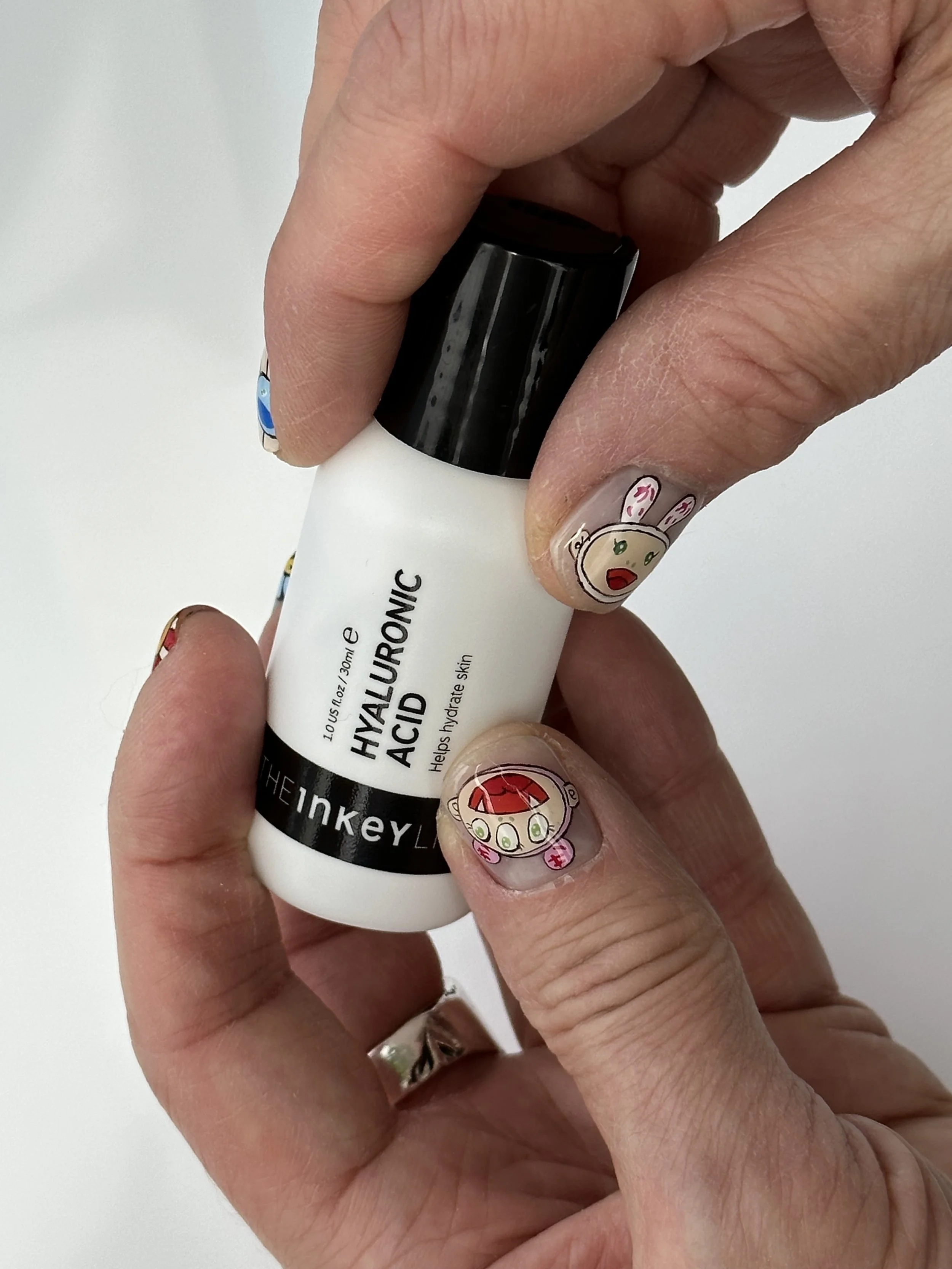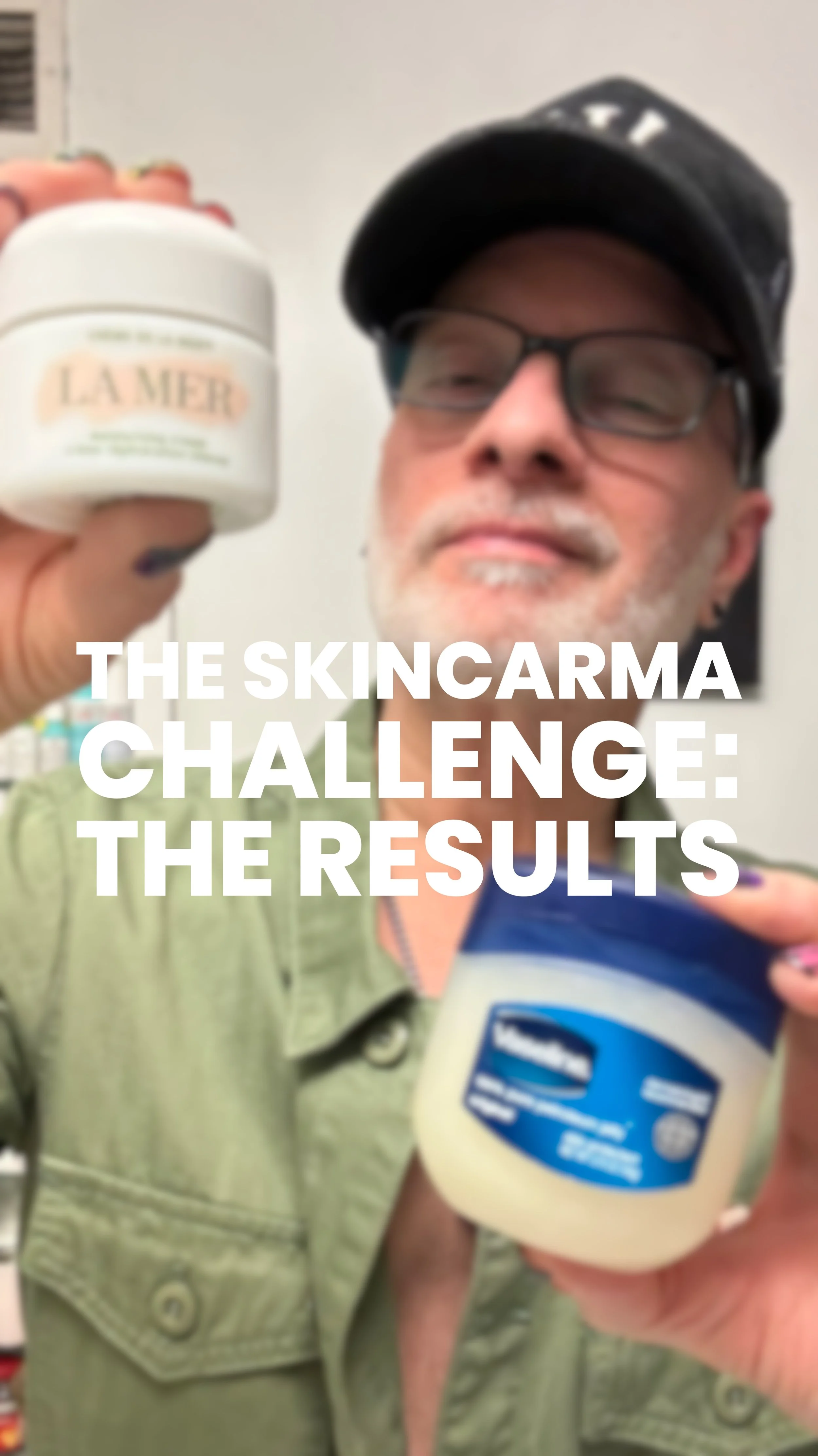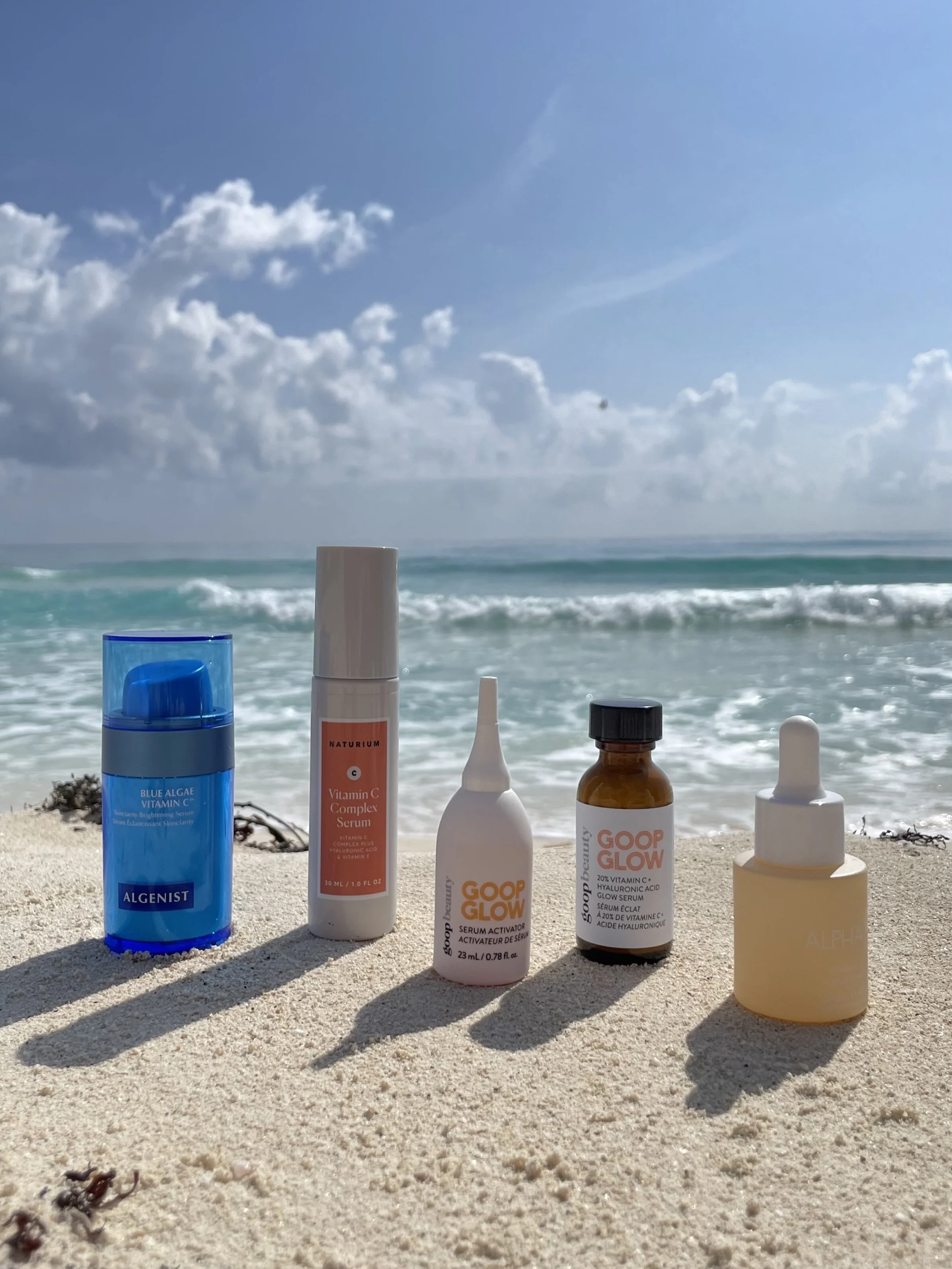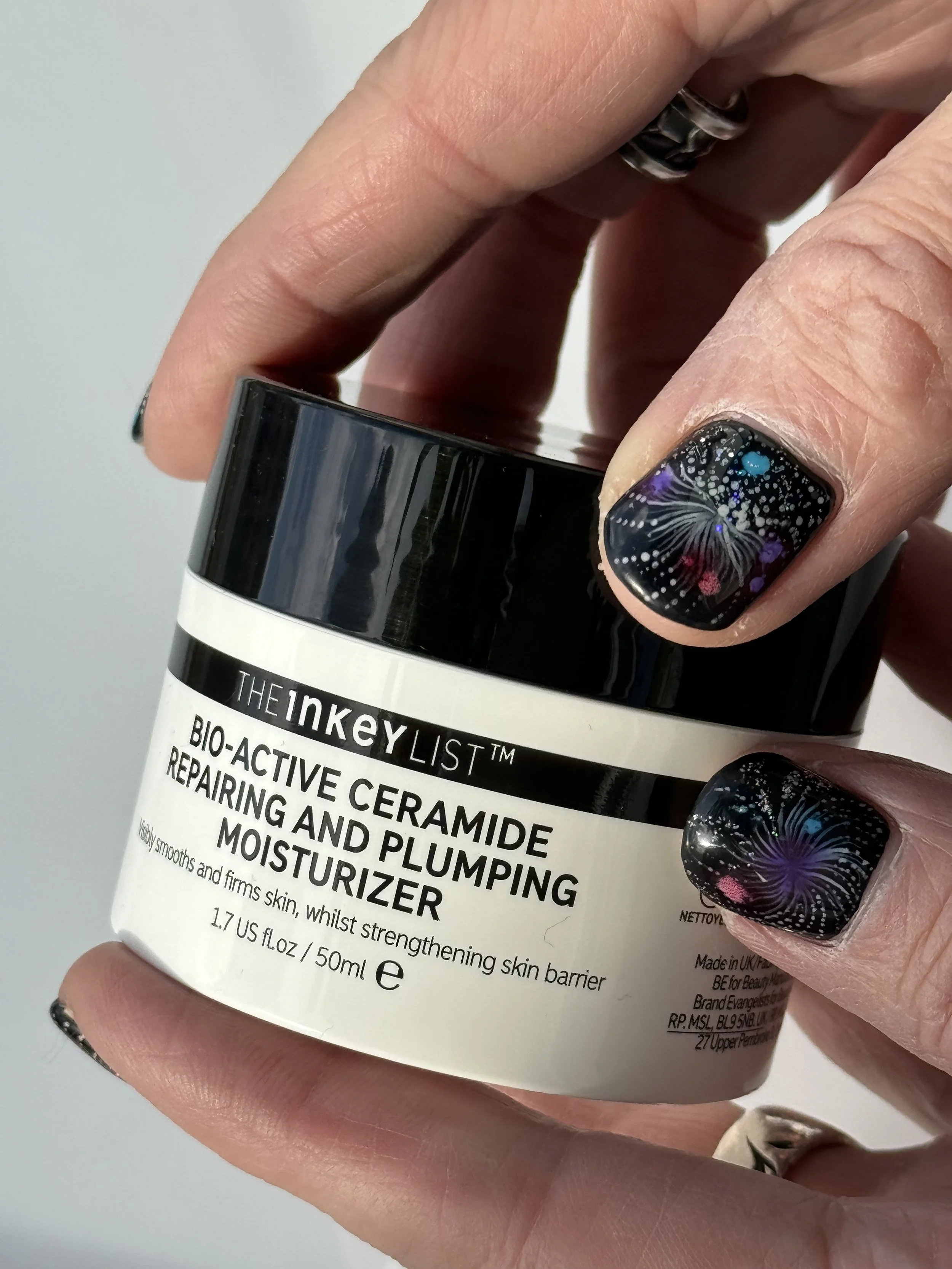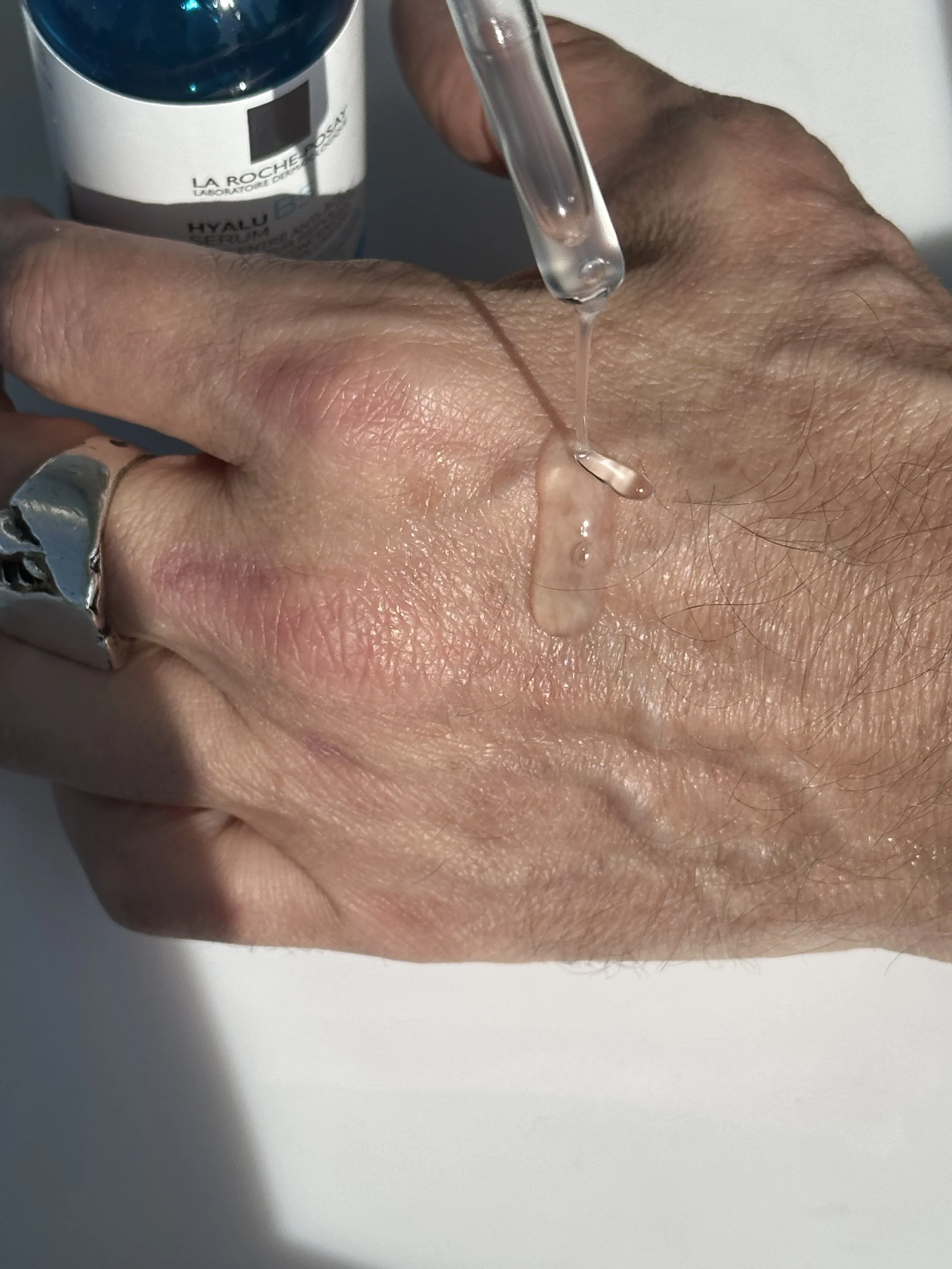PRODUCT REVIEW: MURAD CELLULAR HYDRATION REPAIR SERUM - What does skin look like when dehydrated? How to treat dehydrated skin? What is Hexapeptide-9?
MURAD CELLULAR HYDRATION REPAIR SERUM
There’s no doubt that dehydration is more of an issue during the cold, dry winter months.
During the period between mid-November and the end of February, my entire skincare routine is hyper-focused on a single thing: fighting dehydration.
Have you ever wondered to yourself, Why does skin get so dry in cold weather? Well, it’s all about the air around you. In the winter, the colder air isn’t as humid; that is, it’s not saturated with water like it is on a hot summer day. In winter, you need to drink a lot more water to stay hydrated.
That low-humidity wintry air is the enemy of your skin. It’s like a scavenger, constantly seeking out water for its greedy self. Ever notice how wet dishes and damp towels dry more quickly in the winter? Or how the soil in your plants dries out faster and can quickly harden? It’s because the dry air is absorbing moisture at a faster rate.
The same goes for your skin. The air literally sucks the water out of your face – right through your skin barrier. A lightweight hydrating serum and a rich, occlusive moisturizer are winter skin essentials.
I’ve recently reviewed numerous face creams for dry skin – and all skin types in cold weather. Among my faves are the reformulated Paula’s Choice Resist Barrier Repair Advanced Moisturizer, indie brand Untoxicated’s Moisture Boost Hydrating Cream and The INKEY List’s Bio-Active Ceramide Repairing and Plumping Moisturizer. No joke, it’s the best anti-aging cream for $20. Catch reviews of my top picks of the best face creams for dry skin here.
But a rich, occlusive face cream moisturizer isn’t the only weapon in my dehydration-defense arsenal. A well-formulated hydrating serum is equally important in winning the hydration battle. And the new Murad Cellular Hydration Repair Serum is among the best I’ve come across this year. More on this innovative new Murad formula below…
THE BEST FACE CREAMS FOR DRY SKIN
One night last week I was having dinner with a close friend. She’s always asking me for product recommendations. I’m that person she turns to for a thumbs-up (or down!) before she splurges on a new skincare product.
Over steaming bowls of ramen, she asked how I thought her skin looked. (She knows she’s going to get an honest answer from me.) Recently, she took my advice to add the Paula’s Choice 10% Niacinamide Booster serum to her skincare routine – and her complexion shows it! It’s noticeably more clear, even and bright.
But one thing was bugging me and I just couldn’t hold back. Her skin looked dehydrated.
It was no surprise to me – it’s been in the 20s and 30s here in NYC over the last few weeks. New Yorkers are all so dehydrated! But my comment surprised her. She went straight home after dinner and added a Hyaluronic Acid hydrating serum I’d given her from The Ordinary to her routine.
Problem solved.
PRODUCT REVIEW: THE ORDINARY MULTI-PEPTIDE + HA SERUM
Before I get into my detailed Murad Cellular Hydration Repair Serum product review just below, I wanted to explore some of the most frequently asked questions about dehydration and the ingredient technology behind Murad’s new hydrating serum for dehydrated skin...
1. What does skin look like when dehydrated?
When skin becomes dehydrated, it often appears dull, rough, even itchy and tight. Fine lines are suddenly more visible around your eyes, mouth and cheeks. If the dehydration is seasonal as in winter, these lines may not have been visible just a few weeks earlier. In some cases, your skin may even appear red and irritated.
To be clear, dehydrated skin is a temporary skin condition that occurs when your skin lacks water. Dry skin, on the other hand, is a skin type and generally a long-term condition. Dry skin is best characterized by a lack of natural oils.
The most common signs that your skin may be dehydrated:
Dullness: Dehydrated skin often appears lackluster or dull, lacking the radiant, healthy glow of more normal, hydrated skin. (Think about how much more glowy and hydrated you look in summer.)
Increased Sensitivity: When your skin’s moisture barrier is dehydrated, it can result in increased sensitivity, leaving your skin more prone to irritation, redness and discomfort.
Rougher Texture: Your skin may feel rough, as the lack of moisture can lead to a buildup of dead skin cells on the surface.
More Pronounced Fine Lines: Dehydration often causes fine lines to appear more noticeable because the skin lacks the plumpness that hydration provides, and that fills out surface lines and wrinkles.
Tightness and Itchiness: Your skin may feel uncharacteristically tight, especially after cleansing. Dehydrated skin can also feel itchy due to the lack of moisture – a condition common to dry skin, too.
Oiliness and Flakiness: Your skin may overproduce oil to compensate for the lack of moisture, leading to a more oily and even flaky complexion.
Explore my picks of the best face creams for dry skin on the blog here.
Sources: Healthline: Is My Skin Dehydrated?; WebMD: Signs of Poor Skin Hydration
2. How to treat dehydrated skin?
Addressing skin hydration (or dehydration!) is much easier than you’d imagine.
It starts with hydrating your skin from within by drinking enough water each day. As a general rule, you should drink an ounce of water for every pound of body weight. Simply, if you weigh 150 lbs., you’ll need 150 oz. of water to stay optimally hydrated. It’s especially important during the low-humidity winter months.
Effectively treating skin dehydration topically takes a combination of two common skincare ingredients: humectants and emollients. Think about it as “lock and block.”
Lock water in: A hydrating serum formulated with humectants like Hyaluronic Acid, Beta Glucan and Glycerin is the first step. Humectants bind to water molecules in your skin and lock them in, preventing water loss through the skin barrier – referred to as trans-epidermal water loss, or TEWL.
Block moisture from escaping: Second is to block the escape of moisture with an emollient-rich moisturizer that delivers an occlusive benefit. When a moisturizer is occlusive, it’s effective at preventing moisture from escaping through the skin barrier.
Dehydrated skin? It’s easy. Lock and block!
Explore my picks of the best face creams for dry skin on the blog here.
Sources: Kiehl’s: Dry vs. Dehydrated Skin: How Do They Differ?; Paula’s Choice: Dry vs dehydrated skin: what is it and what skincare do I need?
3. Can I use peptides with hyaluronic acid together?
Yes, peptides and Hyaluronic Acid can be used together in your skincare routine and are superb when combined in a hydrating face serum or face cream for dry and dehydrated skin.
Peptides are short chains of amino acids, which are the building blocks of proteins. There are multiple peptide technologies that can address specific skin concerns, including firmness, elasticity, and skin’s overall repair processes. Notably, certain “signal peptides” can signal skin to produce more collagen, a structural protein that helps to support skin’s firmness and youthful appearance.
Hyaluronic Acid is a naturally occurring substance found in the skin. The popular humectant helps to hydrate and plump the skin by binding to water molecules within the skin. It can also attract water from the air to optimize skin’s hydration levels. Hyaluronic Acid is an essential element in skin hydration and, importantly, in preventing trans-epidermal water loss – the leading cause of dehydration.
Together, peptides and Hyaluronic Acid can work synergistically to promote hydration, firmness, and overall skin health.
Explore my picks of the best face creams for dry skin on the blog here.
Sources: OneSkin: How should peptides be used as part of your skin care routine?; Cosmopolitan: This is the correct order to apply your skincare products
4. What is Hexapeptide-9?
Hexapeptide-9 is a synthetic peptide commonly used in skincare products as a key anti-aging active. Due to its smaller chain of amino acids, the Hexapeptide-9 “signal peptide” is believed to work at a cellular level, facilitating communication between skin cells to encourage the production of collagen – a crucial protein responsible for skin’s youthful firmness and elasticity.
When used in a topical anti-aging cream, Hexapeptide-9 is believed to support skin’s renewal processes, leading to visible improvement in skin texture and, importantly, a reduction in the appearance of fine lines and wrinkles.
Notably, Hexapeptide-9 contributes to skin hydration by boosting the skin’s water retention ability, making it an ideal complement to water-binding humectants like Hyaluronic Acid in a hydrating face serum.
Explore my picks of the best face creams for dry skin on the blog here.
Sources: NIH, National Library of Medicine, PubChem: Hexapeptide-9; INCI Guide: Hexapeptide-9; Active Peptide: Hexapeptide-9
5. Product Review
Murad Cellular Hydration Repair Serum Review
When I dispensed Murad’s Cellular Hydration Repair Serum for the very first time, I thought what an elegant serum! I’m never sure what to expect. Was it going to be super watery like my favorite hydrating serum, The Ordinary’s Marine Hyaluronics? (Psst…it’s the first skincare product I apply in the morning, before even my morning coffee!)
Or would it be pulpy, even slightly “tacky” like most hydrating serums with Hyaluronic Acid? I’d characterize the Glow Recipe Plum Plump Hyaluronic Serum and The INKEY List’s Hyaluronic Acid Serum like that.
But the new Murad Cellular Hydration Repair Serum is more than a hydrating Hyaluronic Acid serum. And it would have to be to justify its $72 price. Who would charge that much for a simple hydrating serum with Hyaluronic Acid? Oh, wait. The foot doctor Barbara Sturm would! The Dr. Barbara Sturm Hyaluronic Serum is nothing more than a basic Hyaluronic Acid serum (hence the name) and costs $325.
WOW THIS TOTY AHA SERUM IS POTENT!
Fortunately, Murad’s new face serum is packed with a cocktail of pro-skin health actives that support skin hydration and, importantly, fight dehydration.
But back to my moment of skincare joy when I first experienced the Cellular Hydration Repair Serum. It’s neither watery nor tacky; rather, it has a very light, silky feel to it. I applied it as the first product in my serum step – which often includes a Niacinamide serum and a Vitamin C or peptide serum (never in the same routine).
My skin was still slightly damp after my hydrating toner and this stuff sank right into my skin. It also has what I would describe as an herbaceous smell to it, which I love. It’s reminiscent of medicinal serum from an old-world apothecary.
As I said, it’s dry and cold here in Brooklyn right now and I’m hyper-focused on hydration. The Murad Cellular Hydration Repair Serum contains a complex of powerful hydrators that are known to prevent trans-epidermal water loss. These include a blend of humectants, emollients and peptides.
The three key actives the brand focuses on are Bilberry Seed Oil (Vaccinium Myrtillus Seed Oil), Hexapeptide-9 and Sodium Hyaluronate – the salt form of Hylauronic Acid that is more compatible with human skin.
The Bilberry Seed Oil is complemented by numerous emollient plant oils, including Avocado Oil, that help block the escape of moisture through the skin barrier – as part of what I describe as a “lock and block” strategy for preventing trans-epidermal water loss (TEWL), the leading cause of skin dehydration.
Locking water in the skin is a plethora of hydrating humectants at high concentrations: Glycerin, Pentylene Glycol and that Sodium Hyaluronate.
But perhaps the most intriguing of the serum’s actives is Hexapeptide-9, which the brand describes as a biomimetic peptide that, “restores damaged skin by emulating barrier-enforcing peptides that reduce water loss.” In fact, Hexapeptide-9 is known to be an ideal complement to common humectants that helps prevent TEWL.
Murad’s Cellular Hydration Repair Serum is one of the best hydrating face serums I’ve come across in a while. A part of both my AM and PM skincare routines, it’s played a central role in my dehydration battle this winter.
6. Pros & Cons
What I like about it: The Murad Cellular Hydration Repair Serum is a well-formulated hydrating serum that contains a cocktail of proven skincare actives known to prevent trans-epidermal water loss. It’s got high-concentrations of both hydrating humectants and emollient plant oils that deliver a “lock and block” strategy to prevent dehydration. The added benefit of the Hexapeptide-9 peptide molecule makes it exceptional. Plus, the light, silky texture is amazing.
What I don’t like about it: I like everything about it.
Who it’s for: All skin types.
SHOP THE BLOG: Want to try it for yourself? Purchase Murad Cellular Hydration Repair Serum for $72 here.
The Ingredient List of the Murad Cellular Hydration Repair Serum:
 sii|h 0 0, Pentylene Glycol solv|h, Vaccinium Myrtillus Seed Oil, C14-22 Alcohols, Persea Gratissima (Avocado) Oil
sii|h 0 0, Pentylene Glycol solv|h, Vaccinium Myrtillus Seed Oil, C14-22 Alcohols, Persea Gratissima (Avocado) Oil  aox|emo 0 0-3, Lactobacillus Ferment
aox|emo 0 0-3, Lactobacillus Ferment  so|pres, Salix Alba (Willow) Extract
so|pres, Salix Alba (Willow) Extract  so, Zanthoxylum Bungeanum Fruit Extract, Sodium Hyaluronate Crosspolymer
so, Zanthoxylum Bungeanum Fruit Extract, Sodium Hyaluronate Crosspolymer  sii|aox|h, Hexapeptide-9
sii|aox|h, Hexapeptide-9  cci, Urea
cci, Urea  sii|h, Yeast Amino Acids h, Trehalose
sii|h, Yeast Amino Acids h, Trehalose  h, Inositol h, Taurine buff, Betaine
h, Inositol h, Taurine buff, Betaine  h, Hydroxyacetophenone aox, Tocopherol
h, Hydroxyacetophenone aox, Tocopherol  aox 0-3 0-3, Oleyl Alcohol emo|perf|solv|vc 2 4, Ethylhexylglycerin pres, Pullulan, C12-20 Alkyl Glucoside emu|surf, Sclerotium Gum vc, Lysolecithin emu, Xanthan Gum vc, Silica vc, Glucose
aox 0-3 0-3, Oleyl Alcohol emo|perf|solv|vc 2 4, Ethylhexylglycerin pres, Pullulan, C12-20 Alkyl Glucoside emu|surf, Sclerotium Gum vc, Lysolecithin emu, Xanthan Gum vc, Silica vc, Glucose  h, Leuconostoc/Radish Root Ferment Filtrate amic|pres, Tetrasodium Glutamate Diacetate chel, Sodium Hydroxide buff, Chlorphenesin pres|amic, Limonene
h, Leuconostoc/Radish Root Ferment Filtrate amic|pres, Tetrasodium Glutamate Diacetate chel, Sodium Hydroxide buff, Chlorphenesin pres|amic, Limonene  perf|solv, Linalool
perf|solv, Linalool  perf, Fragrance (Parfum)
perf, Fragrance (Parfum)  perf
perfPRODUCT REVIEW: THE INKEY LIST HYALURONIC ACID HYDRATING SERUM
IS IT REALLY A SCAM?
Find out on my TikTok channel.
MY TOP VITAMIN C PICKS: VITAMIN C SERUMS I’M CRUSHING ON FROM ALGENIST, NATURIUM AND MORE
WATCH MY VIDEO REVIEW
THE BEST NIACINAMIDE SERUMS FOR CLOGGED PORES AND A BRIGHTER COMPLEXION
ON MY YOUTUBE CHANNEL HERE
WATCH MY VIDEO REVIEW OF
SKINCARE HACKS: GLYCOLIC ACID IS THE NATURAL DEODORANT THAT WORKS!
ON MY YOUTUBE CHANNEL HERE
WATCH MY VIDEO REVIEW OF
MY FAVORITE HUMECTANT SERUMS FROM PAULA'S CHOICE, THE INKEY LIST, GHOST DEMOCRACY AND MORE
ON MY YOUTUBE CHANNEL HERE
WATCH MY VIDEO REVIEW
COOL CLEAN FACIAL SUNSCREENS TO KEEP US SAFE AND SMILING IN THE SUN!
ON MY YOUTUBE CHANNEL HERE
WATCH MY VIDEO REVIEW
THE OPULUS BEAUTY LABS RETINOL SYSTEM – THE COOLEST RETINOL INNOVATION I’VE EVER SEEN
ON MY YOUTUBE CHANNEL HERE
WATCH MY VIDEO REVIEW OF
MY WINTER SKIN SAVIOR: SKINFIX BARRIER+ LIPID REPLENISHING SKINCARE
ON MY YOUTUBE CHANNEL HERE
WATCH MY VIDEO REVIEW
A COMPLETE K-BEAUTY ROUTINE WITH THE BEST FACIAL SKINCARE FROM PURITO, COSRX, MISSHA & MORE!
ON MY YOUTUBE CHANNEL HERE
WATCH MY VIDEO REVIEW
THE YEAR’S BEST VITAMIN C SERUMS WITH PAULA'S CHOICE, SUNDAY RILEY, THE INKEY LIST AND MORE!
ON MY YOUTUBE CHANNEL HERE
WATCH MY VIDEO REVIEW OF
A SELFCARE SUNDAY NOT FOR THE FAINT OF HEART – WITH THE PAULA’S CHOICE 25% AHA PEEL!
ON MY YOUTUBE CHANNEL HERE



